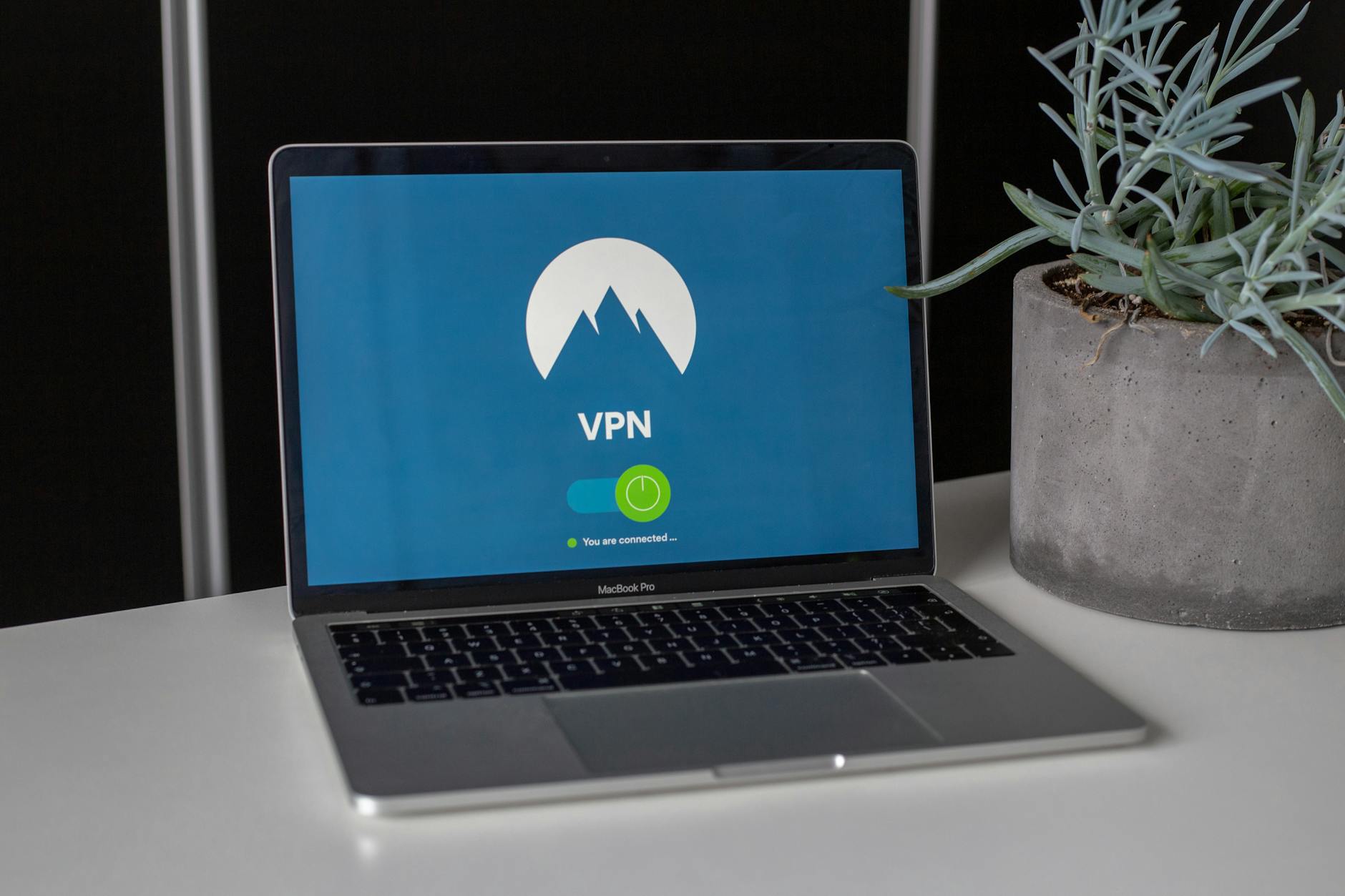The evolution of quality and security in SD-WAN
The evolution of quality and security in SD-WAN

Remember when your network guy said SD-WAN would solve all your connectivity problems? Yeah, that didn’t quite pan out.
SD-WAN solutions exploded onto the scene promising cost savings and simplicity, but many early adopters found themselves with a security and quality headache instead. The truth is, not all SD-WAN solutions are created equal.
By the end of this post, you’ll understand exactly what separates enterprise-grade SD-WAN quality and security from the pretenders.
The evolution of quality and security in SD-WAN has been bumpy, with vendors racing to add features while IT teams struggle to implement them effectively. Many organizations invested in first-generation solutions only to discover critical gaps.
But here’s what nobody’s talking about: the hidden factor that determines whether your SD-WAN deployment will be a strategic win or an expensive mistake.
Understanding Traditional WAN Limitations
Security vulnerabilities in legacy networks
Traditional WANs are basically a security nightmare waiting to happen. Most legacy networks were built when cybersecurity threats weren’t nearly as sophisticated as they are today. They typically rely on a hub-and-spoke design that backhauls all traffic to a central data center – even cloud-bound traffic. This creates massive security gaps.
The problem? These networks weren’t designed with distributed security in mind. Instead of security being built into the fabric of the network, it’s often bolted on as an afterthought. When an attacker breaches the perimeter, they can often move laterally across the entire network. Game over.
Quality of service challenges
Ever tried to run a video conference while someone else is downloading massive files? In traditional WANs, that’s a daily struggle. These networks weren’t built to intelligently prioritize different types of traffic.
Voice and video calls stutter. Critical applications slow to a crawl. And your users? They’re pulling their hair out.
The underlying issue is that legacy WANs use static routing that can’t adapt to changing network conditions in real time. When congestion hits, everything suffers equally – there’s no smart way to ensure your most important applications get priority treatment.
Cost inefficiencies of hardware-based solutions
The hardware addiction in traditional WANs is bankrupting IT budgets everywhere.
Each site needs specialized routers, firewalls, WAN optimizers, and other appliances – all requiring maintenance contracts, regular updates, and specialized knowledge to manage. When you need to scale up, get ready for more hardware purchases and lengthy deployment cycles.
Not to mention the expensive MPLS circuits that many organizations are locked into with multi-year contracts. Those premium prices don’t always deliver premium performance.
Scalability constraints
Adding a new branch location to your traditional WAN? Block off your calendar for weeks.
Legacy networks require physical installation of hardware at each site, manual configuration, and complex integration with existing infrastructure. This rigid architecture simply can’t keep pace with modern business needs.
When companies expand globally, the scalability problems multiply exponentially. Provisioning international MPLS circuits can take months, leaving new offices stranded on inadequate internet connections in the meantime.
The Emergence of SD-WAN Technology

Key technological innovations driving SD-WAN adoption
SD-WAN didn’t just appear out of nowhere. The tech that powers it has been brewing for years, and now it’s changing how businesses connect their networks.
The real game-changer was the shift from hardware to software. Traditional networks were stuck with rigid appliances that couldn’t adapt quickly. SD-WAN flipped the script by making network management software-defined, giving IT teams the flexibility to make changes on the fly.
Another breakthrough? The ability to use multiple connection types simultaneously. Before SD-WAN, if your MPLS line went down, you were toast. Now, SD-WAN intelligently routes traffic across broadband, LTE, and even satellite links, keeping you connected no matter what.
Application awareness is another superpower SD-WAN brings to the table. Your video calls get priority over email, and critical business apps never compete with YouTube videos for bandwidth.
Early SD-WAN implementations and their limitations
The first SD-WAN solutions felt like a breath of fresh air compared to traditional networking, but they weren’t perfect.
Security was often an afterthought. Many early deployments required bolting on security solutions after the fact, creating a patchwork of protections that left gaps.
The management interfaces? Clunky at best. Early adopters had to wrestle with complicated dashboards and limited visibility across their networks.
Performance issues plagued first-gen SD-WAN too. While they promised smart traffic routing, the algorithms weren’t always that smart, leading to unexpected slowdowns and application hiccups.
Market evolution and vendor landscape
The SD-WAN market has exploded from a few pioneering vendors to a crowded field of players.
Traditional networking giants like Cisco and Juniper jumped in, acquiring SD-WAN startups to stay relevant. Pure-play vendors like VeloCloud (now part of VMware) and Viptela (acquired by Cisco) made their mark before being gobbled up.
What’s interesting is how the market has split. Some vendors focus on ease of deployment, others on deep integration with cloud services, and a growing segment combines SD-WAN with comprehensive security (SD-WAN + SASE).
The landscape continues to evolve as vendors race to add AI capabilities, better cloud integrations, and more sophisticated security features. Competition is fierce, and that’s driving rapid innovation in quality and security features.
Quality Advancements in Modern SD-WAN

Application-aware routing capabilities
Ever used a highway with smart traffic systems that reroute cars based on congestion? That’s basically what application-aware routing does for your network data. Modern SD-WAN solutions now recognize specific applications—whether it’s Zoom, Salesforce, or Office 365—and make intelligent routing decisions based on what each app actually needs.
This isn’t your old-school “all traffic is equal” approach. Today’s SD-WAN examines application requirements in real-time and sends the traffic down the most appropriate path. Your video conference gets priority bandwidth while that background file download takes the scenic route.
Dynamic path selection for optimal performance
The network routing game has completely changed. SD-WAN now continuously monitors all available paths—broadband, MPLS, 4G/5G, whatever you’ve got—and makes split-second decisions about where to send your traffic.
Hit a congested connection? Your SD-WAN pivots immediately, shifting critical traffic to clearer paths without missing a beat. The best part? This happens automatically, without your IT team having to lift a finger.
QoS enhancements through AI and machine learning
AI isn’t just for chatbots anymore. Smart SD-WAN solutions now use machine learning algorithms to predict network issues before they impact users. These systems analyze historical patterns and current conditions to make proactive adjustments to quality of service settings.
They’re constantly getting smarter, too. The more data they process, the better they become at predicting bandwidth needs, identifying anomalies, and fine-tuning performance parameters. It’s like having a network admin who never sleeps.
Real-time traffic analysis and optimization
Modern SD-WAN doesn’t just route traffic—it watches it like a hawk. Advanced analytics engines monitor packet loss, jitter, and latency across all connections, making micro-adjustments to maintain performance.
When packets start dropping on a connection, SD-WAN solutions respond instantly, usually before users notice anything’s wrong. They can compress data, eliminate redundancy, and prioritize critical packets to squeeze maximum efficiency from every connection.
Multi-cloud connectivity improvements
Cloud environments used to be SD-WAN’s awkward blind spot. Not anymore. Today’s solutions offer direct peering with major cloud providers, optimized connection paths to SaaS applications, and intelligent routing between multiple cloud environments.
This means your traffic takes the express lane to AWS, Azure, or Google Cloud without unnecessary hops. Better yet, SD-WAN now understands cloud-to-cloud traffic patterns, optimizing those connections too. Whether your data’s moving between clouds or from branch to cloud, it’s getting there faster and more reliably than ever.
Security Evolution in SD-WAN Architectures

A. From basic firewalls to integrated SASE frameworks
SD-WAN security has come a long way from the basic firewalls we used to rely on. Remember when security was just a checkbox feature? Now it’s the star of the show.
Early SD-WAN solutions offered simple stateful firewalls – enough to keep the most obvious threats out, but not much else. It’s like having a front door lock but leaving your windows open.
Today’s SD-WAN platforms have embraced SASE (Secure Access Service Edge), combining networking and security into one seamless framework. This isn’t just bolting on security features – it’s baking them into the architecture’s DNA.
B. Zero Trust Network Access integration
“Never trust, always verify” isn’t just a catchy security slogan – it’s now fundamental to modern SD-WAN design.
Zero Trust Network Access (ZTNA) in SD-WAN means every connection request gets scrutinized, regardless of where it comes from. Your network no longer automatically trusts devices just because they’re inside your perimeter.
The beauty of ZTNA in SD-WAN? Granular access control that follows users wherever they go. An employee in the office or working from a coffee shop gets the same security treatment – authenticated, authorized, and continuously validated.
C. Threat intelligence and advanced detection capabilities
SD-WAN platforms now act as security command centers with real-time threat intelligence feeds. They’re constantly updated about emerging threats and attack patterns.
Machine learning algorithms analyze traffic patterns to spot anomalies human eyes might miss. They can identify potential data exfiltration or malware communication hidden in normal-looking traffic.
D. Automation of security policies and responses
The days of manually configuring security rules across dozens of branch offices are thankfully behind us. Modern SD-WAN security is all about automation.
Security policies now follow applications and users automatically. When a new branch comes online, it inherits appropriate security controls without IT breaking a sweat.
Even better, when threats are detected, SD-WAN can respond automatically – isolating affected segments, blocking suspicious connections, and alerting security teams. This cuts response time from days to seconds.
The Convergence of Security and Quality in SD-WAN
How enhanced security enables better performance
Security and performance in SD-WAN aren’t opposing forces – they’re actually perfect partners. When your network security game is strong, your performance naturally levels up too.
Think about it this way: robust security protocols prevent data breaches and network downtime. Every minute your network stays up and running smoothly is a win for performance. Modern SD-WAN solutions bake security right into the architecture instead of bolting it on as an afterthought.
This integrated approach means traffic doesn’t need to zigzag through multiple security checkpoints, creating bottlenecks. Instead, security inspection happens seamlessly within the normal flow of data. The result? Faster connections with fewer points of failure.
Plus, sophisticated threat detection means less wastage of precious bandwidth on malicious traffic or DDoS attacks. Your network resources go where they should – to legitimate business traffic.
Balancing security controls with user experience
Nobody loves waiting for screens to load because of overzealous security measures. The best SD-WAN solutions strike that perfect balance.
Context-aware security is the magic ingredient here. Not all traffic needs the same level of scrutiny. Your SD-WAN can be smart enough to apply heavier security where it matters most while keeping things flowing for less sensitive applications.
User experience improves dramatically when:
- Security policies adjust dynamically based on risk levels
- Authentication happens invisibly in the background
- Security updates deploy without disrupting workflows
- Protection measures scale automatically with traffic demands
End-to-end visibility benefits for both security and quality
You can’t fix what you can’t see. That’s why comprehensive visibility across your entire network is a game-changer for both security and performance.
With end-to-end monitoring, you spot potential security threats before they become full-blown problems. Simultaneously, you identify performance bottlenecks and quality issues that might frustrate users.
This unified view means your team stops working in silos. Security folks and network performance engineers share the same dashboard, speaking the same language, solving problems together.
Real-time analytics let you make instant adjustments to security policies or bandwidth allocation based on actual conditions – not guesswork. And historical data helps you plan ahead, preventing both security vulnerabilities and performance issues before they emerge.
Future Trends Shaping SD-WAN Development
AI isn’t just a buzzword in SD-WAN anymore—it’s becoming the brain behind truly self-managing networks. Modern SD-WAN solutions are incorporating machine learning algorithms that actually learn from network patterns and make real-time decisions without human intervention.
Think about it: networks that heal themselves, optimize traffic automatically, and predict issues before they happen. That’s where we’re headed.
Companies like Cisco and VMware are already building systems that analyze massive amounts of network data to spot anomalies in seconds rather than hours. The end result? Network operations that require fewer human eyeballs and deliver more consistent performance.
Edge computing integration with SD-WAN
The explosion of IoT devices has created a perfect storm for edge computing and SD-WAN to join forces. When you’ve got data being generated everywhere from factory floors to retail checkouts, waiting for it to travel to a distant data center just doesn’t cut it anymore.
SD-WAN architecture is evolving to intelligently route traffic between edge computing nodes, cloud resources, and data centers. This creates mini networks within the larger network, processing data where it makes the most sense.
For businesses, this means blazing-fast response times for critical applications and dramatically reduced bandwidth costs by processing more locally.
5G and SD-WAN synergies
5G and SD-WAN were made for each other. The ultra-fast, low-latency connections of 5G networks are giving SD-WAN a powerful new transport option that rivals traditional fixed connections.
Many organizations are already using 5G as a backup link, but we’re quickly moving toward it becoming a primary connection option—especially for branch offices or retail locations. The speed and reliability make it viable, while the SD-WAN intelligence ensures traffic takes the best path available.
The real magic happens when 5G’s network slicing capabilities meet SD-WAN’s application-aware routing. This combo lets specific applications get guaranteed performance levels across the entire network path.
Beyond SASE: what’s next for secure networking
SASE (Secure Access Service Edge) brought security and networking together in a neat package, but the innovation train keeps rolling. The next frontier looks like zero-trust principles baked directly into the SD-WAN fabric.
We’re seeing a shift toward continuous authentication and verification at every level of the network. It’s no longer enough to verify once at the perimeter—modern solutions are checking and rechecking constantly.
The most exciting development might be the move toward fully programmable security. Instead of rigid policies, we’re getting security frameworks that adapt based on user behavior, threat intelligence, and application requirements—all in real time.
SD-WAN technology has transformed network architecture, overcoming the limitations of traditional WANs through intelligent traffic routing, enhanced performance monitoring, and integrated security features. As we’ve seen, the evolution from basic software-defined networking to today’s sophisticated platforms reflects a continuous improvement in both quality of service and security capabilities, with the convergence of these elements creating truly robust enterprise solutions.
Organizations looking to modernize their network infrastructure should consider SD-WAN not just as a replacement for legacy systems, but as a strategic asset that can adapt to evolving business needs and emerging threats. With AI-driven analytics, zero-trust architectures, and unified management platforms shaping the future of SD-WAN, businesses that embrace these technologies now will be well-positioned to maintain competitive advantage in an increasingly connected digital landscape.











